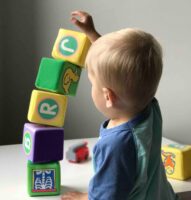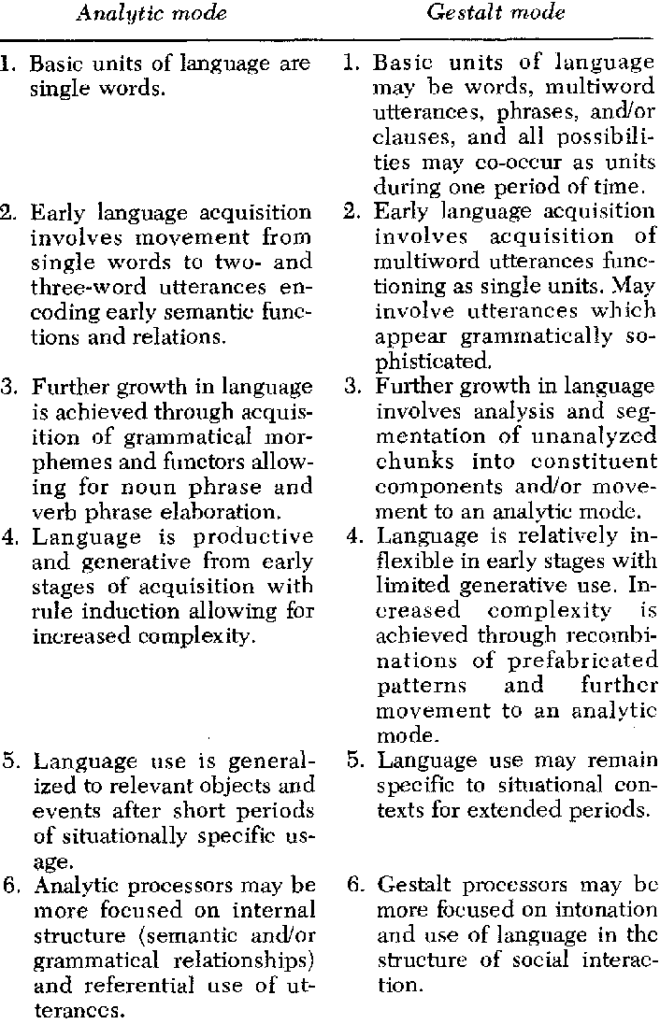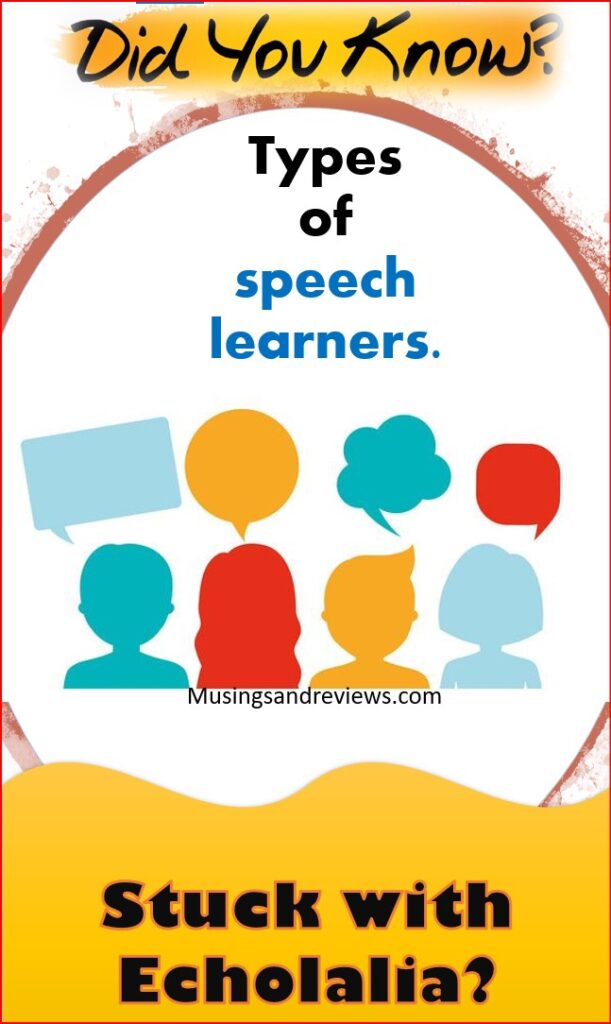 Do you have a toddler who isn’t talking, has trouble with eye contact or participating in an activity with you? Have you noticed that your toddler is able to label many items but is unable to tell you what they want in a meaningful way? As a parent to a child like that I understand how overwhelmed, frustrated and helpless you may feel having tried everything. I remember feeling isolated and hopeless listening to the rhymes my child sang repeatedly, throughout the day and communicated nothing!
Do you have a toddler who isn’t talking, has trouble with eye contact or participating in an activity with you? Have you noticed that your toddler is able to label many items but is unable to tell you what they want in a meaningful way? As a parent to a child like that I understand how overwhelmed, frustrated and helpless you may feel having tried everything. I remember feeling isolated and hopeless listening to the rhymes my child sang repeatedly, throughout the day and communicated nothing!
I recall shuttling between “educational” apps, early intervention and speech therapy services and realized that the skills aren’t transferring into real communication. I so feel the unconditional love you have for your child that has caused you to look for answers and not give up! Let’s dive in.
So, when is a child’s communication considered delayed?
First, lets understand what normal speech milestones for a growing child look like. This will help you reflect on what your child is currently exhibiting and stay in positive anticipation of the future.
Normal Pattern of Speech Development
| AGE | ACHIEVEMENT |
| 1 to 6 months | Coos in response to voice |
| 6 to 9 months | Babbling |
| 10 to 11 months | Imitation of sounds; says “mama/dada” without meaning |
| 12 months | Says “mama/dada” with meaning; often imitates two- and three-syllable words |
| 13 to 15 months | Vocabulary of four to seven words in addition to jargon; < 20% of speech understood by strangers |
| 16 to 18 months | Vocabulary of 10 words; some echolalia and extensive jargon; 20% to 25% of speech understood by strangers |
| 19 to 21 months | Vocabulary of 20 words; 50% of speech understood by strangers |
| 22 to 24 months | Vocabulary > 50 words; two-word phrases; dropping out of jargon; 60% to 70% of speech understood by strangers |
| 2 to 2 ½ years | Vocabulary of 400 words, including names; two- to three-word phrases; use of pronouns; diminishing echolalia; 75% of speech understood by strangers |
| 2½ to 3 years | Use of plurals and past tense; knows age and sex; counts three objects correctly; three to five words per sentence; 80% to 90% of speech understood by strangers |
| 3 to 4 years | Three to six words per sentence; asks questions, converses, relates experiences, tells stories; almost all speech understood by strangers |
| 4 to 5 years | Six to eight words per sentence; names four colors; counts 10 pennies correctly |
Information from Schwartz ER. Speech and language disorders. In: Schwartz MW, ed. Pediatric primary care: a problem oriented approach. St. Louis: Mosby, 1990:696–700.
Copyright © 1999 by the American Academy of Family Physicians.
What is echolalia?.
When children repeat phrases, sounds it is called echolalia. This is a means to developing language, however could be a red sign if seen beyond a certain age. When a child repeats a word/most words and sounds right after they hear them it is called immediate echolalia.
When they repeat it at a later time, sometimes days or months away then it is called delayed echolalia. Many a times this can seem out of context and repetitive in nature, also interchangeably called as “scripting“
Some examples of delayed echolalia: repeating a line from a video over and over after days/months. Constantly singing the same rhyme regardless of the situation. A child with speech delay may use echolalia when he is bored, tired or just to self stimulate himself/herself. Understanding this will help you guide your child’s echolalia and turn it into functional language.
That is why we need to know the TWO PRIMARY LANGUAGE ACQUISITION STYLES.
They are analytic and gestalt language modes of acquisition. For a long time, I had no answer for my son’s delayed echolalia and every therapist simply was working “around it”. He had limited speech and until I stumbled on this article, I did not figure out that my child checked all boxes of a “gestalt language processor”. Read on to understand and ensure you are using the right approach for such a kid, as they need even greater levels of support to make progress.
Please see the chart below for quick reference. Originally published here, for more details.

Can my child with speech delays catch up? Well you can surely make progress.
Gestalt language acquisition is a style of language development with predictable stages that begins with the production of multi-word “gestalt forms” and ends with the production of novel utterances.
- At first, children produce “chunks” or “gestalt form” (e.g., echolalic utterances), without distinction between individual words and without an appreciation for internal syntactic structure.
- As children understand more about syntax and syntactic rules, they can analyze (break down) these “gestalt forms” and begin to recombine segments and words into spontaneous forms.
- Eventually, the child is able to formulate creative, spontaneous utterances for communication purposes.
To summarize: Gestalt learners learn in “chunks” without processing the meanings of individual words. This learning style is called a “gestalt” style of language acquisition. Read on how to support their language acquisition!
- Teach appropriate gestalts that can be used as building blocks. E.g “I need help”, “Potty please”.
▪ Pick gestalts that the child understands and would be useful for them to combine (e.g., “let’s find,” “want more”, “missing”)
▪ Use motivating and preferred activities- always, I can’t stress this enough. Use these routines to offer meaningful gestalts.
▪ Try not to teach rote/inflexible scripts that are not true symbolic communication (e.g., “Can I please use the bathroom?”), instead, use simpler words or two-word phrases like “potty please”.
Here is the one I want to share that immensely helped my case.
Teach core words as a strategy. Core words are 50-400 words that make up the majority of everything we say. More on this in my following post. In a layman’s term teach individual words and generalize effectively in various natural situations. This broadens their vocabulary and situational awareness. Practice generalizing across settings and communication partners.
Understanding words and modeling their use purposefully, just a few phrases at a time seems to be the practical step in setting the stage for recombining novel words. Read my next post on core words here.
Final thoughts:
Understand if your child is a gestalt language processor. Use echolalia to bridge the gap and build self-generated communication. It’s a tested strategy in my case, it worked, and my child made great progress in using novel utterances, by combining individual words. It gave him a boost with emotional regulation as well. His newly learned speech made it easier to communicate, thus reducing anxiety, and positively impacting his outcome of engaging with others throughout the day.

References-
Stiegler, L. N. (2015). Examining the echolalia literature: where do speech-language pathologists stand?.American journal of speech-language pathology, 24(4), 750-762. ▪ B. Prizant, J. Duchan, “The functions of immediate echolalia in autistic children”, Journal of Speech and Hearing Disorders, no. 46, pp. 241–249, 1981. ▪ Blanc, M. (2012). Natural language acquisition on the autism spectrum: The journey from echolalia to self-generated language. Madison, WI: Communication Development Center. ▪ Local, J., & Wootton, T. (1995). Interactional and phonetic aspects of immediate echolalia in autism: A case study. Clinical Linguistics & Phonetics, 9, 155–184. ▪ Prizant, B. M., & Duchan, J. F. (1981). The functions of immediate echolalia in autistic children.Journal of speech and hearing disorders, 46(3), 241-249. ▪ Rydell, P., & Mirenda, P. (1994). Effects of high and low constraint utterances on the production of immediate and delayed echolalia in young children with autism. Journal of Autism and Developmental Disorders, 24, 719–735. ▪ Sterponi, L., & Shankey, J. (2014). Rethinking echolalia: Repetition as interactional resource in the communication of a child with autism. Journal of Child Language, 41, 275–304. ▪ Tarplee, C., & Barrow, E. (1999). Delayed echoing as an interactional resource: A case study of a 3-year-old child on the autistic spectrum. Clinical Linguistics & Phonetics, 13, 449–482. ▪ https://blog.asha.org/2017/05/09/echoes-of-language-development-7-facts-about-echolalia-for-slps/ ▪ https://www.hanen.org/SiteAssets/Articles---Printer-Friendly/Research-in-your-Daily-Work/The-Meaning-Behind-the-Message_Helping-Childrenwh.aspx
Frequently asked questions.
When does echolalia stop?
Echolalia is a normal stage of language development in early childhood, and children typically outgrow it around their third birthday.
Could there be echolalia without autism?
Yes, it is possible.
How do you approach vocal scripting?
You can read further on evidence based methods such as- Response interruption and redirection for vocal stereotypy in children with autism: a systematic replication.
Approach implementation with caution, consider your whole child and not just his/her behavior in time.
Do gestalt language learners make progress and talk?
Yes they do. Refer – Blanc’s stages of gestalt language acquisition. Work with your child and reach them with teaching strategies that make a difference. E.g core words.
